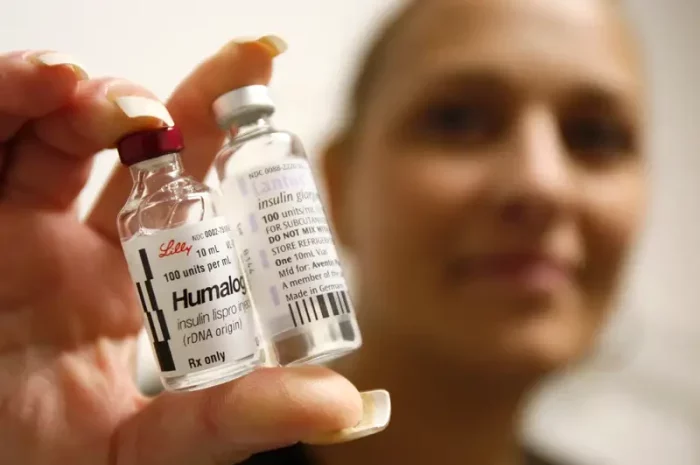In the realm of endocrinology and diabetes care, hyperglycemia—characterized by elevated blood glucose levels—stands as a critical concern. Traditionally associated with dietary choices, medication adherence, and physical activity levels, hyperglycemia’s etiology is multifaceted. A less frequently discussed but equally significant factor is pain. This article explores the intricate relationship between pain and hyperglycemia, unraveling the physiological mechanisms, clinical implications, and management strategies pertinent to this intersection.
Understanding Hyperglycemia
Hyperglycemia is defined by blood glucose levels exceeding the normal range, typically above 126 mg/dL (7.0 mmol/L) when fasting or 200 mg/dL (11.1 mmol/L) two hours postprandial. Chronic hyperglycemia is a hallmark of diabetes mellitus, both type 1 and type 2, and is associated with various complications, including cardiovascular disease, neuropathy, retinopathy, and nephropathy.
Physiological Mechanisms Linking Pain and Hyperglycemia
Stress Response and Hormonal Flux
The body’s response to pain is inherently tied to its stress response, often referred to as the fight-or-flight response. This response involves the hypothalamic-pituitary-adrenal (HPA) axis and the sympathetic nervous system, both of which significantly influence glucose metabolism.
Activation of the HPA Axis: Pain stimuli trigger the release of corticotropin-releasing hormone (CRH) from the hypothalamus, which stimulates the pituitary gland to secrete adrenocorticotropic hormone (ACTH). ACTH, in turn, prompts the adrenal glands to release cortisol. Cortisol, a glucocorticoid, increases blood glucose levels by promoting gluconeogenesis and reducing glucose uptake in peripheral tissues.
Sympathetic Nervous System Activation: Pain also activates the sympathetic nervous system, leading to the release of catecholamines such as adrenaline and noradrenaline. These hormones enhance glycogenolysis and gluconeogenesis while inhibiting insulin secretion, thus raising blood glucose levels.
Inflammatory Cytokines and Insulin Resistance
Pain, particularly chronic pain, is often accompanied by inflammation. Pro-inflammatory cytokines like tumor necrosis factor-alpha (TNF-α), interleukin-6 (IL-6), and C-reactive protein (CRP) are released in response to pain and inflammation. These cytokines interfere with insulin signaling pathways, leading to insulin resistance. As a result, glucose uptake by cells diminishes, and blood glucose levels rise.
Clinical Evidence of Pain-Induced Hyperglycemia
Acute Pain Episodes
Acute pain, such as that experienced during surgery or injury, can cause transient hyperglycemia. Studies have demonstrated that surgical patients often exhibit elevated blood glucose levels postoperatively. This hyperglycemic response is attributed to the stress-induced hormonal changes and inflammatory response associated with tissue trauma.
Chronic Pain Conditions
Chronic pain conditions, such as arthritis, fibromyalgia, and neuropathy, have been linked to persistent hyperglycemia. In these cases, the ongoing pain and inflammation perpetuate a state of insulin resistance and altered glucose metabolism. Research indicates that patients with chronic pain often have higher HbA1c levels, a marker of long-term glycemic control, compared to those without chronic pain.
Pain Management in Diabetic Patients
Effective pain management is crucial for diabetic patients, not only for improving quality of life but also for maintaining optimal glycemic control. The following strategies are essential in addressing pain-induced hyperglycemia:
Pharmacological Interventions
Analgesics: Non-opioid analgesics such as acetaminophen and nonsteroidal anti-inflammatory drugs (NSAIDs) are commonly used for pain relief. However, their impact on glucose levels varies, and careful monitoring is required.
Opioids: While opioids can be effective for severe pain, their use in diabetic patients is controversial due to the risk of addiction and potential impact on glucose metabolism. Some studies suggest that opioids may exacerbate insulin resistance.
Antidepressants and Anticonvulsants: Medications such as tricyclic antidepressants (e.g., amitriptyline) and anticonvulsants (e.g., gabapentin) are often used for neuropathic pain. These drugs can have complex effects on glucose metabolism and should be prescribed with caution.
Non-Pharmacological Interventions
Physical Therapy: Exercise and physical therapy can alleviate pain and improve insulin sensitivity. Tailored exercise programs help reduce inflammation and enhance glucose uptake by muscles.
Cognitive-Behavioral Therapy (CBT): CBT and other psychological interventions address the emotional and psychological aspects of chronic pain, which can indirectly improve glycemic control by reducing stress and enhancing pain coping mechanisms.
Acupuncture and Mind-Body Techniques: Techniques such as acupuncture, yoga, and mindfulness meditation have shown promise in managing chronic pain and stress, potentially leading to better glycemic outcomes.
Monitoring and Assessment
Regular monitoring of blood glucose levels in patients with pain is essential. Continuous glucose monitoring (CGM) systems can provide real-time data on glucose fluctuations, helping to identify patterns related to pain episodes. Additionally, assessing pain intensity and its impact on daily activities can guide treatment adjustments.
Case Studies and Clinical Trials
Numerous clinical studies have examined the relationship between pain and hyperglycemia. For instance, a study involving postoperative patients with diabetes revealed a significant correlation between pain intensity and blood glucose levels, highlighting the need for effective pain management in this population. Another trial investigating patients with chronic low back pain found that comprehensive pain management, including pharmacological and non-pharmacological approaches, led to improved glycemic control and reduced HbA1c levels.
Integrating Multidisciplinary Care
Managing pain and hyperglycemia in diabetic patients requires a multidisciplinary approach involving endocrinologists, pain specialists, primary care physicians, physical therapists, and psychologists. Coordinated care ensures that all aspects of the patient’s health are addressed, promoting better overall outcomes.
Future Directions in Research
While significant progress has been made in understanding the link between pain and hyperglycemia, several areas warrant further investigation:
Molecular Mechanisms: More research is needed to elucidate the precise molecular pathways through which pain influences glucose metabolism. This knowledge could lead to targeted therapies that mitigate pain-induced hyperglycemia.
Longitudinal Studies: Long-term studies are necessary to assess the impact of chronic pain management on glycemic control and diabetes complications. Such studies would provide valuable insights into the benefits of integrated care approaches.
Personalized Medicine: Future research should explore the potential of personalized medicine in managing pain and hyperglycemia. Genetic and biomarker studies could identify individuals at higher risk of pain-induced hyperglycemia, allowing for tailored interventions.
See also: What’s the Mystery Behind Morning Hyperglycemia
Conclusion
Pain is a significant and often underappreciated contributor to hyperglycemia in diabetic patients. Understanding the physiological mechanisms underlying this relationship, recognizing the clinical evidence, and implementing effective pain management strategies are crucial steps in mitigating the impact of pain on glycemic control. By adopting a multidisciplinary and personalized approach, healthcare providers can improve the quality of life and health outcomes for diabetic patients experiencing pain.
Continued research and clinical efforts are essential to advance our understanding and management of pain-induced hyperglycemia, ultimately leading to more comprehensive and effective diabetes care.
Related topics:
What’s the Link Between Hyperglycemia and Hypertension
























